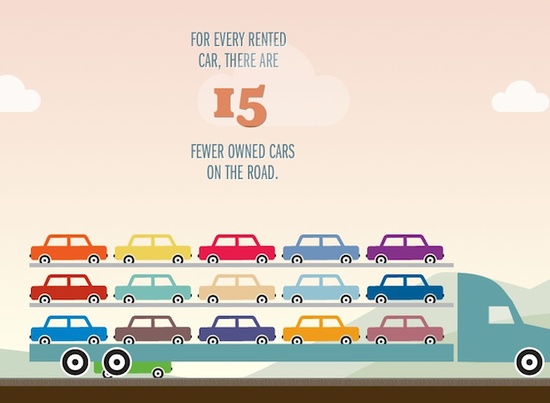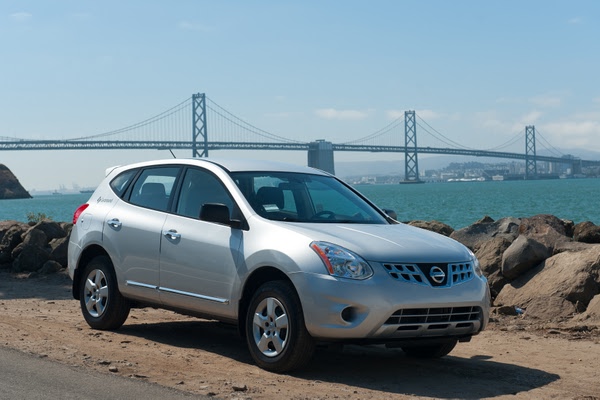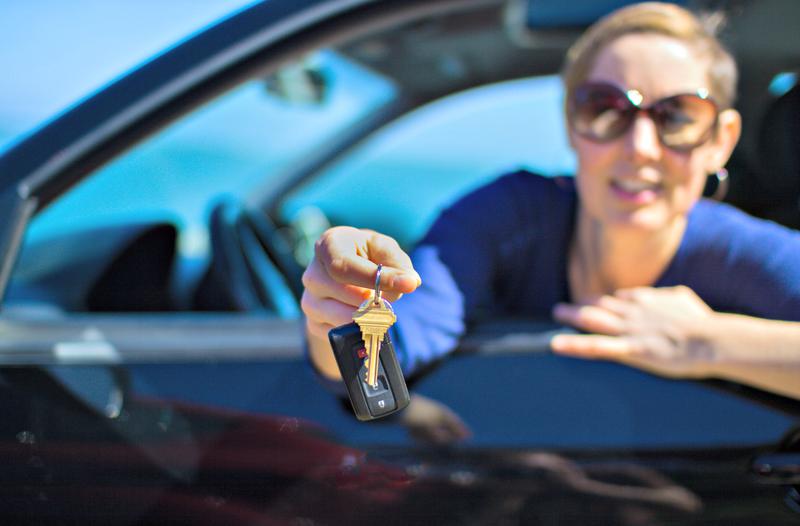So, you want to dip your toe into this sharing economy thing, but you don’t know how to start? Peer-to-peer car sharing is an easy and safe way to do it. Follow these 5 easy steps from an expert and in no time you, too, will be making money with that under-utilized vehicle, connecting with your community, and joining a powerful movement.
My story: I’ve had my car since 2005, and as my jobs, projects, and schedule have changed, so has the frequency of car use. I’m now down to driving it only once or twice a week, but since I started sharing it in 2010, I have made about $10,000 off its use, which is its approximate current value. So, financially it has made sense for me to keep the car, use it occasionally, and share it the rest of the time, rather than sell it. My car has been borrowed over 250 times, and I have done between 10 and 15 interviews on television and in print talking about it.
There are now over 15 companies world-wide facilitating car sharing (a list is compiled below). They traditionally offer insurance coverage while your car is being borrowed and most of them have smart-phone apps for easy management. Car sharing reduces traffic congestion, oil consumption, and air pollution.

(Infographic courtesy Fast Company)
Ready to give it a go? Let’s get started.
1. Make sure you and your vehicle qualify*:
a. Are you at least 18 years young?
b. Do you have a driver’s license and good driving record?
c. Is your car less than 15 years old, has less than 150,000 miles, and runs well?
d. Does your vehicle have a value of less than $50,000?
*These details vary a bit by company, so be sure to read the fine print before signing up.
Pro Tip: If the company you choose gives you the option to have a GPS kit installed in your car, do it. The keyless entry makes borrowers happy, reservations instant, and the company can easily find your car at any time.
2. Take photos — lots of photos! Show people what both the inside and outside of your car look like. People like to see what they’ll be getting into. You can photograph your car in fun environments, put a local monument in the background, or take pictures from interesting angles. Basically, it helps to give your car a personality and make it look appealing. This is also a good way to track the condition of your car and make yourself and future borrowers aware of any pre-existing scrapes and scratches.

(Photo courtesy Getaround)
Pro Tip: Clear out and clean your car inside and out before taking the pics, and on a regular basis, to keep your borrowers happy.
3. Name your car and write a catchy listing. My car is The Proton, because it’s a Prius and part-electric and I’m a nerd. You can name your Mini “Minny,” or your Subaru “Shazam” or your green van “Godzilla.” Get creative!
a. For the general info you’ll need:
i. Make, model, year, mileage, and VIN (Vehicle Identification Number).
ii. Color, features (e.g. moon-roof, audio-input, bike rack, all-wheel drive, etc.), condition, and a description of any pre-existing damage.
iii. Any specific times or days of the week that your car is not available — plan ahead for when you’ll need to use it.
Pro Tip: Inside your vehicle, occasionally leave special items or notes for your borrowers, like a picnic blanket in the trunk, or a list of good non-metered parking streets for the return. You can mention these in the listing or hint that there may be a special surprise for borrowers.

(Photo courtesy Wheelz)
Set the rental price for your car — you will receive about 60% of this. In some countries you should plan to pay taxes on it. Set an accessible price to start. Compare your car with other similar cars in your city (this makes a difference — Honolulu and Paris have different needs!), and price yourself either below or at the average. Here is a handy chart from RelayRides with some suggested rates that I think are too high.
Pro Tip: Once you’ve had several successful borrowers and you start getting positive reviews, then you might want to increase the rates. Don’t be afraid to change the price up and down to find your sweet spot. You first want to get more people borrowing your car so that you get plenty of reviews.
4. Advertise! Many car owners forget this part. You have to tell people that your car is available. Several car sharing platforms offer referral credits, and some will even give you flyers to distribute.
Good online venues to post a listing are Craigslist, Facebook, Twitter, and any other social media you use. Don’t forget to spread the word to your friends and local network. And take this opportunity to tell them how righteous it is to minimize the number of cars on the road, how much money they’ll save by not buying themselves a car, and how they’re contributing to a more livable city.
Pro Tip: Since immediate neighbors are the most likely to benefit from the available car, I used to walk around my neighborhood with a stapler and put flyers in my local laundromat bulletin board, at the library, in corner stores, and pizza parlors. Remember to ask the establishment if it’s okay, and be prepared to do some educating about car sharing too.
5. Lastly, COMMUNICATE. (Good advice for all kinds of relationships!) Talk to your borrowers — send them a short email or text when they reserve your car.
During the reservation, be sure to respond quickly to any inquiries. Answer the phone when an unknown number comes in because it could be your borrower. Make a good first impression by sorting out key exchanges easily, and setting clear expectations. This has been reported as the number one way to encourage more borrowers for your car, and Response Rate is often tracked in your owner profile.
Pro Tip: I have a brief script that I use whenever someone makes an instant reservation. It welcomes them, lets them know to expect the car to be tidy and clean, and that the tank should be full. Apart from being friendly, this alerts them to how they should treat and return the car.
So, now that you see how easy it is to get started, are you ready to join other sharing smarties?
To make it even easier for you, here’s an international list of peer-to-peer car sharing companies. Tell us in the comments if we’ve missed any. We’d also love to hear about your experiences sharing your car, or if there’s anything still stopping you.
Have a good ride! And below my picture is a guide to peer to peer car sharing services around the world.

United States
France
- buzzcar.com/fr/
- fr.cityzencar.com
- drivy.com (formerly VoitureLib)
- livop.fr
Germany
- autonetzer.de/car2share
- nachbarschaftsauto.de
- tamyca.de
- rent-n-roll.de
Spain
Australia
- drivemycarrentals.com.au
- carnextdoor.com.au
Singapore
Martinique, Caribbean
##
Caterina Rindi has authentic, if irrelevant, claims to royalty, apart from being the RelayRides First Lady of San Francisco. Find her on Twitter @CaterinaRindi and on Facebook at Caterina Rindi Shares.









